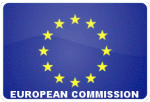Guidance Documents
Why produce guidance documents?
The CIS was established to assist Member States
implement the WFD in order to avoid duplication of effort and to
minimise the risks of poor application. To achieve this, a number of
key activities were identified. Included in these activities is sharing
information and elaborating guidance of key technical issues.
What is the purpose of the guidance documents?
Guidance documents are informal, non-legally binding
documents that have been produced to assist Member States implement the
WFD. Guidance documents have been prepared covering many aspects of
implementation, such as establishing monitoring programmes, undertaking
economic analyses, engaging the public, developing classification
systems, how to identify and designate heavily modified and artificial
water bodies etc. The guidance documents are intended to provide an
overall methodological approach, but these require tailoring to
specific national circumstances.
As of October 2005, fourteen guidance documents have
been finalised. Seven of the guidance documents have associated policy
summaries that provide an overview of the documents. Since the last
edition of this CD ROM in 2003, three new guidance documents have been
produced:
- The role of wetlands in the WFD;
- Overall approach to classification of ecological
status and ecological potential; and,
- Guidance on the Intercalibration process 2004-2006
Brief summaries of these, and the remaining eleven
documents are provided below. To view the complete document and
associated policy summary (if available), click on the relevant report
cover.
As new guidance documents are finalised, they will be
made available on CIRCA.
Summary of Guidance Documents
Guidance Document No. 1 Economics
and the Environment The Implementation Challenge of the Water Framework
Directive WATECO (2003)
 |
 |
This guidance document provides a detailed
account of the processes that need to be considered for the economic
analysis and the presentation of these analyses required by the
Directive at the end of 2004. The economic elements and their role in
water policy-making are explained, and the Directive’s references to
economics and its economic requirements are reviewed. |
Guidance Document No. 2
Identification of Water Bodies (2003)
|
|
This guidance document provides both definitions of, and
practical guidelines for identifying WFD water body types, considering
groundwater and surface water bodies. A general account is provided, as
well as a detailed method of identification.
|
Guidance Document No. 3 Analysis of
Pressures and Impacts Impress (2003)
 |
 |
This guidance document provides an overview of
the part that pressures and impact analysis take in relation to: the
characterisation of water bodies, and the development of monitoring
programmes, river basin management plans and programmes of measures. A
general approach to analysis is described, including the key steps that
need to be carried out, as well as methodologies for identifying
pressures and impacts on surface and ground waters. |
Guidance Document No. 4
Identification and Designation of Heavily Modified and Artificial Water
Bodies – HMWB (2003)
 |

|
This guidance document describes the process for
designating artificial and heavily modified waterbodies in accordance
with the WFD, including the provisional identification in the first
river basin planning cycle. Descriptions of establishing reference
conditions, environmental objectives on which status classification is
based, and the actions required to ascertain the appropriate values of
maximum ecological potential (MEP) and good ecological potential (GEP)
are provided. A summary of the issues related to costs and measures
throughout the process are also presented in this document. |
Guidance Document No. 5 Transitional
and Coastal Waters - Typology, Reference Conditions and Classifications
Systems – COAST (2003)
 |
This guidance document defines coastal and transitional
waters and recommends suitable methods for assigning coastal water
bodies to river basin districts. A framework for the identification of
reference conditions is developed, guidance on carrying out the initial
physical characterisation of water body types and an explanation of
biological reference conditions and their use is provided. The document
also introduces the principles of classification and the requirements
of classification tools for coastal and transitional waters. |
Guidance Document No. 6 Towards
Guidance on Establishment of the Intercalibration Network and the
Process on the Intercalibration Exercise – Intercalibration (2003)
 |
 |
This guidance document discusses the purpose of
intercalibration and outlines the process for carrying out the
Intercalibration Exercise, in accordance with Article 21 and Annex V of
the Directive. A synthesis of intercalibration processes, the key steps
and the possible bottlenecks are identified and the implications of
limited intercalibration with long and short-term solutions are also
presented. Guidance for the 2002-2004 exercise, regarding to
establishing a network of intercalibration sites, is provided and
preliminary guidance for the 2005-2006 intercalibration exercise is
also addressed. |
Guidance Document No. 7 Monitoring
under the Water Framework Directive – Monitoring (2003)
 |

|
This guidance document explains the fundamental
concepts and terms in the Directive relating to monitoring, including
the term ‘water body’, and the concepts of ‘risk, precision and
confidence’. Guidance is provided on a number of quality elements for
parameters relating to surface and ground waters, and the design and
implementation of monitoring programmes. An overview of current
monitoring programmes in Member States is also provided. |
Guidance Document No. 8 . Public
Participation in Relation to the Water Framework Directive – Public
Participation (2003)
 |
This guidance document provides specific assistance on
how to involve the public in the different levels of the implementation
process. An outline of the general planning stages is provided. The
document describes the processes required for active involvement,
consultation and provision of access to information and background
documents. Indicators for reporting and evaluation are considered, and
requirements for capacity building and investment in order to build
relations and understanding between different stakeholders are also
addressed |
Guidance Document No. 9 Implementing
the Geographical Information System Elements (GIS) of the Water
Framework of the Water Framework Directive – GIS (2003)
 |

|
This guidance document outlines the requirements
of maps that are to be reported to European Commission, and clarifies
when they are needed. Guidance is provided on the different GIS layers
that make up these maps, the level of detail and spatial accuracy
expected from the data and the reference system to use for reporting
the data. Data validation procedures and standards that should be
followed are also covered. The format for transferring layers to the
Commission in the short term is defined, and discussion of the
development of a long-term integrated reporting system is discussed. |
Guidance Document No.10 Rivers and
Lakes – Typology, Reference Conditions and Classification Systems – REFCOND
(2003)
 |

|
This guidance document examines the methods and
principals, and describes specific tools for establishing reference
conditions and class boundaries between high, good and moderate
ecological status, for rivers and lakes. Future developments and
examples of good practice of the suggested approach of the tools are
also provided. |
Guidance Document No. 11 Planning
Processes – Planning Processes (2003)
 |
This guidance document provides an explanation of what
is required in respect to River Basin Management (RBM) Planning, and an
examination of the concept of water planning is provided. An overview
of good practices is provided and the main tasks that need to be
undertaken in the preparation of an RBM plan are identified, and
timeframes provided. |
Guidance Document No. 12 The Role of
Wetlands in the Water Framework Directive – Wetlands (2003)
 |
(NEW IN 2005 CD-ROM) This guidance document provides a
functional description of wetlands coherent with the purposes of the
Directive. The specific role of wetlands in achieving the environmental
objectives, for surface, ground and coastal and transitional waters are
demonstrated. An analysis of relationships between wetlands and surface
water bodies, terrestrial ecosystems and other elements of surface
water having an influence on water bodies and catchment management is
introduced, as well as the relationship between heavily modified and
artificial water bodies. Pressures and impacts on wetlands are
discussed, and the role of wetlands in the Programme of Measures (PoM).
Wetland monitoring and issues that may be further developed are also
addressed. |
Guidance Document No. 13 Overall
Approach to the Classification of Ecological Status and Ecological
Potential – Classification (2005)
 |
(NEW IN 2005 CD-ROM) This guidance document outlines the
role of the general physico-chemical quality elements in ecological
classification, as well as the general guidance on the assessment of
ecological status and potential leading to the overall ecological
classification of water bodies for the purposes of the Directive. The
guidance draws on existing guidance documents like REFCOND, COAST,
MONITORING, and HWWB. Guidance on achieving better conclusions
from monitoring data is also provided. |
Guidance Document No. 14 Guidance on
the Intercalibration Process 2004-2006 – Intercalibration
2004-2006 (2005)
 |
(NEW IN 2005 CD-ROM)
This guidance document follows on from the Intercalibration Guidance Document (No. 6) by
providing an overview of the key principals of the intercalibration
process, and the options for carrying out the Intercalibration
Exercise. A summary of what should be in the final intercalibration
report is also provided, as is the organisation of the work and the
required timetables. A framework for deriving class boundary values
consistent with the WFD normative definitions, a list of geographic
intercalibration groups (GIGS) and an example of a hybrid
intercalibration option is given. |
|




